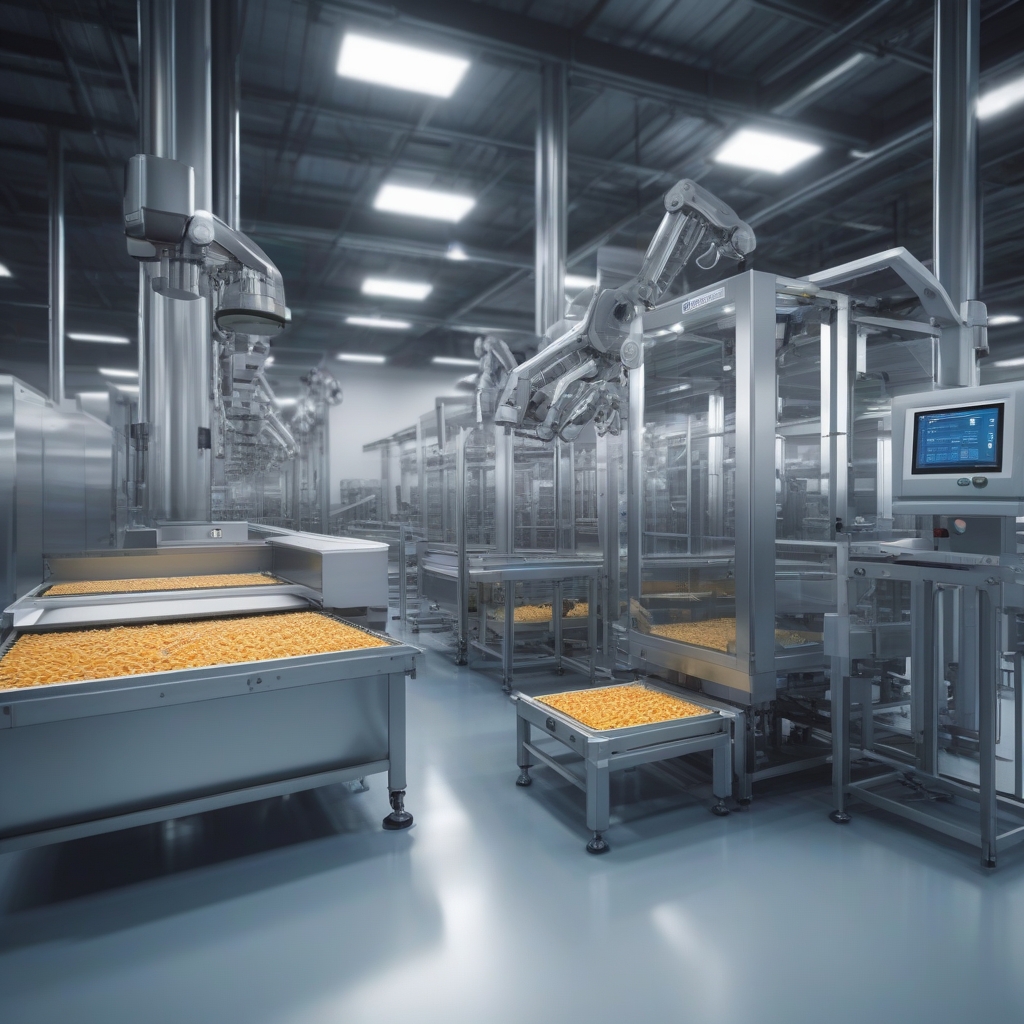The food industry is undergoing a monumental transformation, driven by the integration of automation technologies. As the demand for more efficient, safe, and high-quality food production intensifies, industry leaders are turning to automation to overcome pressing challenges. This evolution not only meets increasing consumer expectations but also enhances operational efficiency. In this article, we delve into how automation solutions are transforming the food industry, offering a glimpse into the future of food processing.
Why Automation in the Food Industry?
The necessity for automation in the food industry stems from several critical challenges:
- Workforce Shortages: The food sector has long suffered from labor shortages. Automation can supplement human labor by handling repetitive tasks, allowing workers to focus on more strategic roles.
- Food Safety and Quality Assurance: As consumers become more discerning, maintaining high safety and quality standards is paramount. Automation ensures consistent precision, reducing human error and enhancing quality control.
- Operational Efficiency: Automated systems enhance speed and efficiency, minimizing downtime and maximizing production output.
- Cost Reduction: By streamlining processes, automation can lead to significant cost savings over time.
Role of Robotics in Food Processing
Robotic technologies have made a substantial impact on the food processing industry. In modern processing facilities, robotic arms are now a common sight, performing tasks ranging from sorting and packaging to intricate assembly operations.
- Precision and Speed: Robotics provide unmatched precision, handling delicate food items with care at speeds humans cannot match.
- Versatility: Robotics can be programmed for various tasks, making them a versatile solution adaptable to different stages of food processing.
- Reduced Human Error: Automation reduces human intervention in repetitive tasks, decreasing the risk of errors and improving consistency.
Harnessing Data Analytics for Quality Control
Incorporating advanced data analytics into food processing offers immense benefits, particularly in quality control. Here’s how:
- Real-Time Monitoring: Automated systems paired with data analytics provide real-time monitoring of production lines, enabling immediate identification and rectification of any issues.
- Predictive Maintenance: Data analytics facilitates predictive maintenance, reducing unplanned downtime and extending equipment life.
- Enhanced Traceability: With stricter regulatory requirements, data analytics improve traceability, ensuring compliance and boosting consumer trust.
The Integration of AI in Automation
Artificial intelligence (AI) is revolutionizing the food processing industry by enhancing automation capabilities:
- Improved Decision-Making: AI-driven systems analyze vast amounts of data, leading to better decision-making processes and optimized production cycles.
- Personalization: AI enables the personalization of products, catering to individual consumer preferences at scale.
- Advanced Problem-Solving: AI can anticipate potential production bottlenecks or quality control issues and suggest proactive solutions.
Human Oversight: The Essential Component
Despite the advances in automation, human oversight remains crucial. The human workforce provides:
- Strategic Management: Humans are essential for strategic decision-making, setting goals, and managing production workflows effectively.
- Creative Problem Solving: While machines excel at routine tasks, humans contribute creativity and innovation to solve complex challenges.
- Interpersonal Skills: Humans facilitate communication and collaboration, ensuring seamless integration of automated systems.
A Harmonized Workforce
The food processing industry’s future lies in harmonizing human skills with automation technologies, creating a workforce that leverages the strengths of both. This collaborative environment promises to drive the industry forward, delivering higher efficiency and unmatched product quality.
Conclusion: A Brave New World in Food Processing
Automation solutions are undeniably transforming the food industry, addressing numerous challenges and paving the way for future advancements. As these technologies continue to evolve, companies that embrace automation stand to gain a competitive edge, ensuring they meet consumer demands while maintaining high standards of quality and safety. The shift towards an automated future signifies an exciting journey, where efficiency, innovation, and human ingenuity converge to shape the next chapter in food processing.
By implementing these cutting-edge solutions, the food industry not only overcomes present challenges but also unlocks new opportunities for growth and improvement, ultimately changing how we produce, consume, and think about food.

Leave a Reply